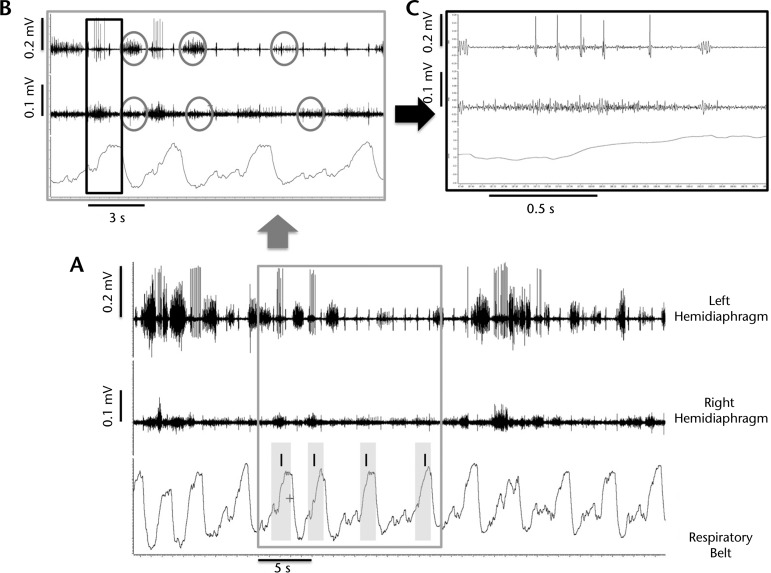Figure 5.
Right and left hemidiaphragm asynchrony in patient 3. Evidence of asynchrony and loss of phasic inspiratory activity of the left hemidiaphragm reflects denervation of phrenic motor units and altered control of breathing, which may have influenced the lower functional recovery of breathing in patient 3. (A) Respiratory plethysmography and diaphragm electromyographic (EMG) tracings, recorded spontaneous diaphragm activity during full mechanical ventilation, 1 month after implantation of the diaphragm pacemaker. Shaded areas show inspiration. (B) Gray cutout box from graph A illustrates expiratory phase activity (circles), which could be co-contraction to generate positive end-expiratory pressure and offset malacia. In addition, intermittent periods of inspiratory quiescence and large amplitude inspiratory bursts are apparent on the left hemidiaphragm (top) EMG tracing. (C) Black cutout box from graph B shows bursting pattern from a single motor unit. The large-amplitude complex bursts and repetitive discharges suggest partial denervation of this motor unit.

